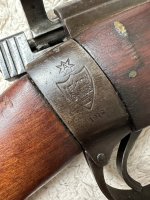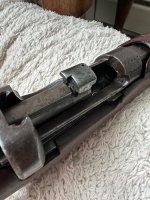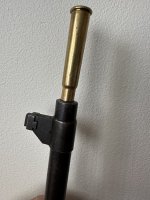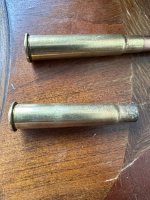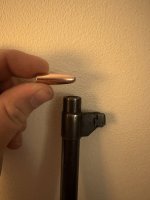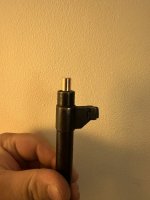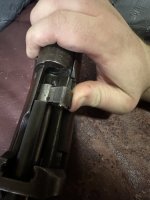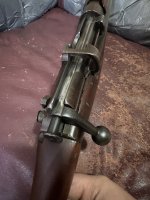- Location
- Newfoundland
Hey all, I finally got to the range with all my 303s (2 smle and a no4 all sporterised) and when shooting this lithgow smle lll from 1916 it groups at about 4 feet (yes feet) at 100 yards, I was always going to make this a project rifle but I think before I go about unsporterising it I should at least get that grouping down to a foot (not user error the other smle patterns at 5-8 inches at 100 with irons and the no4 did close to 2 with a scope)
I know the receiver is probably bad because the bolt head can rotate upwards at any point in the receiver and the headspace is pretty bad because we almost had to kick the bolt open after firing a round, there’s also a weird almost pitting on the end of the spent case and a bullet will fit completely in the muzzle ( not a great measurement tool but it’s what I have atm)
My question is, aside from the frame issues would fixing the headspace tighten up that group at all or should I try to find a barreled action to replace it, are new barrels made and able to be brought in? Should I just focus on fixing the headspace? Or replacing the receiver?
Any input and information is always appreciated
I know the receiver is probably bad because the bolt head can rotate upwards at any point in the receiver and the headspace is pretty bad because we almost had to kick the bolt open after firing a round, there’s also a weird almost pitting on the end of the spent case and a bullet will fit completely in the muzzle ( not a great measurement tool but it’s what I have atm)
My question is, aside from the frame issues would fixing the headspace tighten up that group at all or should I try to find a barreled action to replace it, are new barrels made and able to be brought in? Should I just focus on fixing the headspace? Or replacing the receiver?
Any input and information is always appreciated
















































